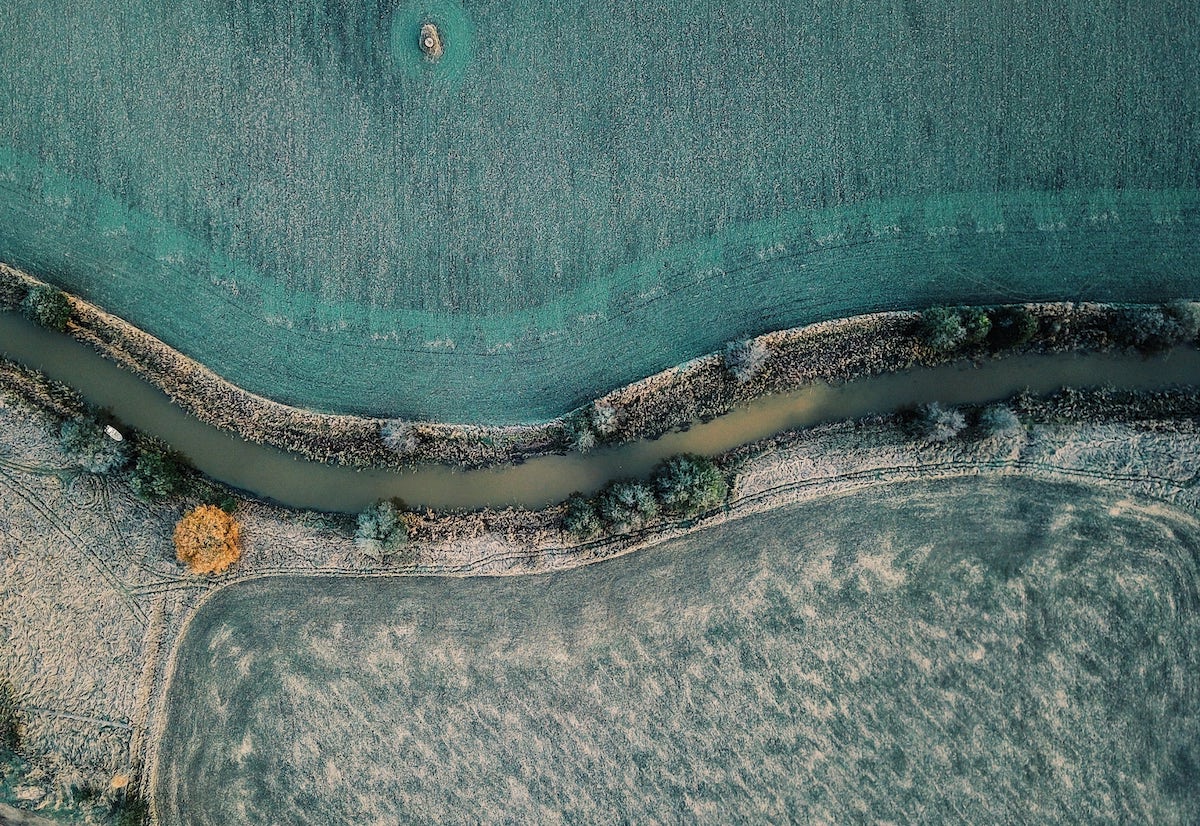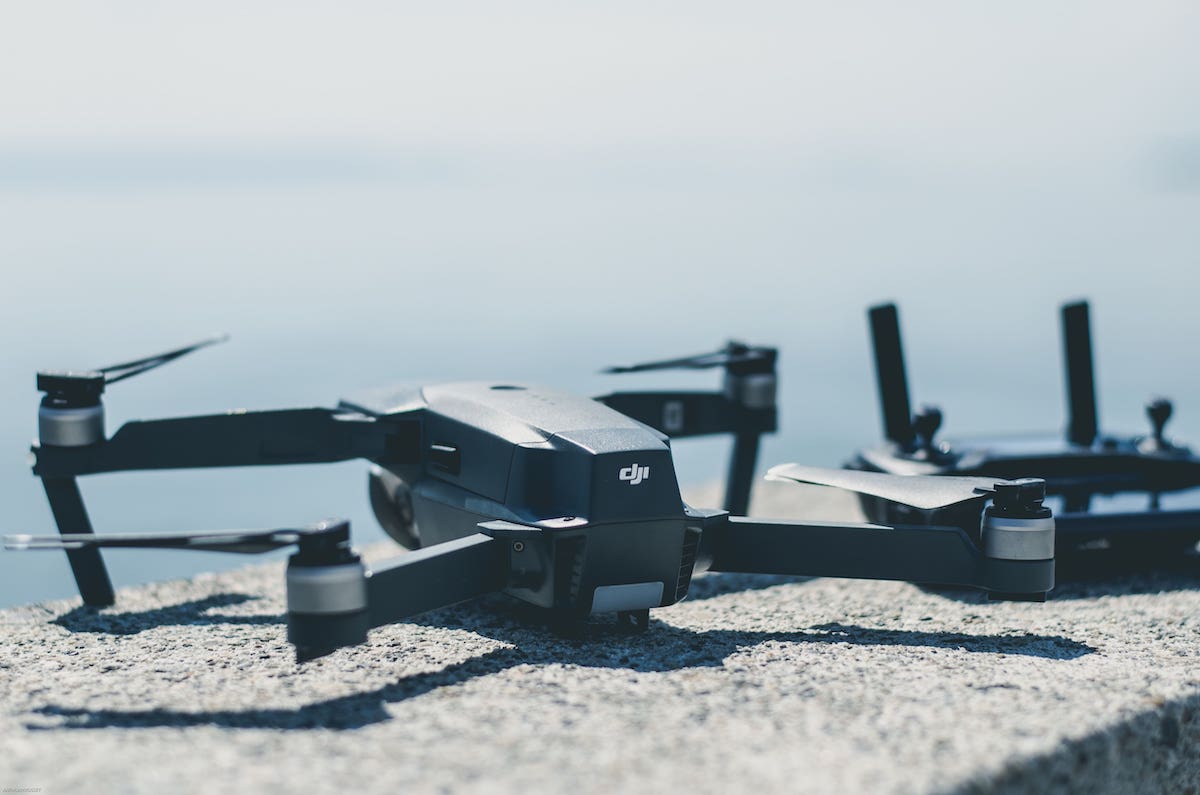Capture Shots From Above: 11 Essential Tips for Drone Photography
Rent film gear from local filmmakers.

Rent film gear from local filmmakers.
Drones have become a piece of equipment that can capture pictures that seemed impossible before. Or at least very hard to achieve. In the past, you had to fly over areas with an airplane.
Now you can take your drone out and take some incredible pictures.
If you have considered drone photography yourself, then you're in luck! In this article, we go through essential tips for new drone photographers.
If you're a beginner and want to learn how to fly a drone, you can read our article on becoming a drone pilot.
If you are looking for more gear for your photography arsenal, check out our article on camera equipment.
11 Essential tips for aerial photography
Taking pictures with a drone can be difficult, And that is why we have gathered 11 tips for you to improve your aerial photography.

1. Choose a drone suitable for your skill level
Drones have become more and more popular, and with that, a variety of models exists. When you look for a drone, you should consider your purpose for getting one.
Some drones come with pre-built cameras. However, the camera quality varies a lot. Others are built for drone racing and not made for photography.
The best thing you can do is do extensive research on the drone pre-hand, and consider what you will use the drone for. Then it is easier to choose when it comes down to it.
2. Complete a pre-flight checklist
Before flying, you should prepare a pre-flight checklist that you can go through.
You can start by writing a list of everything you need so you won't forget anything before you fly. Then you can make sure to double-check that your drone is correctly assembled and that your camera is running.
Lastly, you should ensure that you are not in an area that is too crowded, so you are not bothering people or risking your drone crashing into them.
3. Research and plan the location
You should always meticulously research and plan your flight, focusing on the location. That is because many areas do not allow you to fly your drone. It all comes down to the rules & regulations in your country.
Furthermore, try to stay away from crowded places, regardless of drone flying being legal. It is safer in case anything goes wrong.
By researching and planning your location, you will also get a better sense of where you can capture the best footage. You can plan the route using google maps and save time when you're at the spot. And in case your drone crashes, you will have a better idea of where it could be if you somewhat know the area.

4. Shoot in RAW
When doing aerial drone photography, you should shoot in RAW format. The RAW format allows you to take uncompressed pictures meaning a better quality picture, but bigger files.
As your drone is typically pretty far up, it would almost be pointless to shoot in JPEG or other formats. You can always convert it later in your photo editing software. However, this also means that you should keep an SD card or two in hand, just in case you run out of memory.
5. Consider the time of the day
You have to consider what time of day you explore with your drone. While the obvious is that you can't shoot in the dark, you also have to be wary of the sun.
If you have harsh sunlight, it can ruin your shots with reflections and other visual distractions. The best thing to do is shoot in the early or late times of the day, as long as there is a somewhat low sun out.
6. Use the rule of thirds
If you have experience in photography, you probably know about the rule of thirds. It is all about composition and using a grid to divide an image into nine squares.
The same applies to drone photography, and you can typically activate a 3x3 grid on your display to help you compose your photos.
Learn more about the rule of thirds in aerial drone photography here.
7. Keep ISO low to avoid noise
As you probably know, a higher ISO can brighten your image but will add a lot of unwanted noise. That's why you should lower your ISO to below 100, to make sure that your picture isn't full of noise.
It will give you clearer images, but it will also make you rely on natural lighting. It's another good reason to shoot early in the day, as it provides you enough brightness to shoot a great photo while avoiding the downsides of harsh sunlight.
8. Stack images for noise reduction
Stacking images is something photographers who deal with wide frames do. It could be people taking pictures of the night sky or landscape photographers.
It requires editing software, where you take images in bursts and stack them together in the software. For this to be possible, you will need a "burst mode" on your drone, which should be present in most modern drones. It will allow you to shoot different frames in quick succession.
9. Use ND filters
You can control the exposure of your camera lens by using ND filters. They will allow you to fend off the worst of the glaring sunlight, which could potentially ruin your shots. ND filters allow you to shoot for longer without sunlight interference.
You can also use ND filters to control the contrast of the scenery and have different saturations that match the area you are shooting. So if you have the wallet for it, it's always great to have a few in hand when shooting.

10. Look for symmetry and patterns
This one takes experience, but you have to start somewhere. The best aerial photography shots are those that look like it was painted or taken straight out of a travel magazine.
While nature is unpredictable, you can still be lucky to find symmetry or beautiful patterns to shoot. The advantage of having a drone is that you can see things that no one else can while flying in the air.
11. Go slow and steady
Don't rush through. First of all, it can be dangerous to speed in vast and open areas, because you can easily get lost. But in terms of your drone photography, you have to make sure that you are not missing anything.
Take it slow and explore the area properly. You might find an interesting subject for your photos, and you can use this to practice. Instead of taking a few pictures and going on, try and use the things you have learned to take a great photograph. After all, practice makes perfect!
Take your time with your excursions, and bring extra batteries. Don't feel like you have to explore the entire scenery in one trip. You can always go back and explore other areas.
3 things to consider for drone photography
Outside of our 11 tips for aerial drone photography, we also have three important things for you to consider.

1. Image quality
Consider the quality of the camera you are using when flying around with your drones. If your drone has a built-in camera, then it's probably not going to be a great quality camera. It can, however, function as an ideal starter drone to get a feeling for how aerial photography works.
And when you're ready, you can buy a more expensive drone where you can attach your camera to it. Remember that your drone is going high up. So if your camera is not up-to-par, the pictures will be of sub-par quality.
In the end, if you want to be serious about your drone photography, you're going to have to put your big spender pants on.
2. Weather challenges
If you want to do drone photography as a hobby in your spare time, know that weather will restrict your flying. If you plan on spending your weekend flying your drone, know that these plans could fall through. It can also make it harder to control the drone, as wind will affect your flying.
If you live in a country/area with bad weather, your drone flying could be limited. If you want to fly anyways, you should look into drones that can handle rougher weather.
3. Piloting
You're going to have to spend time learning how to pilot your drone. It is sort of like riding a bike for the first time. So expect it to be hard and expect to fail. You could consider going without a camera for the first few trips to understand the basic piloting. You can always attach the camera later.
Another way you can is to use a simulator to practice your moves. There are plenty of simulators available if you are using an FPV drone. You can find our guide on the best FPV drone simulators, highlighting the best simulators on the market.
Explore the best drone cameras
Are you still not convinced a drone is a worthy investment? Don't worry! Because you can use Wedio to rent or subscribe to a drone. You can avoid spending thousands on new gear that you are unsure if you will like.
If you want to know which camera is best for your drone, you can check our article on the best drone cameras.
How much does a drone photographer make?
The average annual salary of a drone photographer is around $50,000.
How to start a drone photography business?
The best way to start a drone photography business is to find clients who need work. You can then expand on your client list when you have built a portfolio.
How much is drone photography?
It can vary depending on the photographer, but the average drone photographers charge around $100 an hour.
How do I become a drone photographer?
To become a drone photographer, you need a drone, a camera, a license to fly your drone, a portfolio, and a lot of practice.























